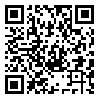Background and Aim: The first step in establishing a safety system is hazard identification. If this is not done properly, the subsequent steps steps will not be done effectively either. Since any given identification technique often targets the hazards of one or two of the main elements of a safety system, it is not possible to identify all hazards by a single technique
Materials and Methods: This cross-sectional study was conducted to explore the available scientific literature aiming at finding practicable hazard identification techniques that can potentially determine the highest number (%) of hazards in a safety system. First five techniques were implemented and the number of identified hazards by each was determined, followed by calculation of the coefficient of hazard identification effectiveness for each technique. Using this approach two techniques in two different safety systems were tested
Results: The number of hazards identified using the hazard and operability analysis (HAZOP) technique, and, as a result, its coefficient of hazard identification effectiveness was the highest as compared to other techniques. Individually, the HAZOP and AEA techniques, used as primary hazard identification techniques, identified only 20-80% of all the hazards which could otherwise be identified if all identification techniques had been used.
Conclusion: The results show that the HAZOP technique can identify a higher number of hazards than any other technique. However, if used alone, this technique will probably identify only 40% of all the hazards. The important point is that selection of an appropriate technique plays an important role in identifying a higher number of hazards.
Received: 2011/06/14 | Accepted: 2012/01/17 | Published: 2013/09/11
| Rights and permissions | |
 |
This work is licensed under a Creative Commons Attribution-NonCommercial 4.0 International License. |


